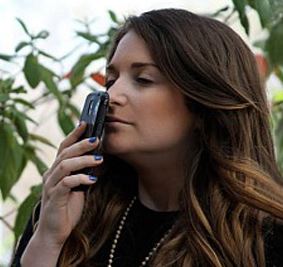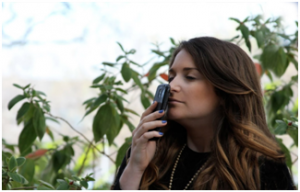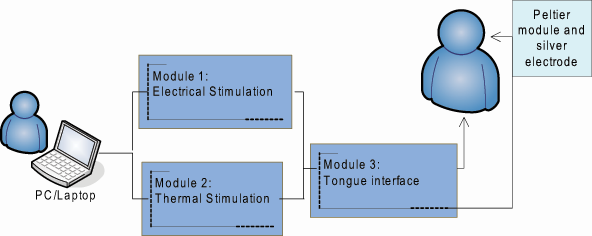Many web-addicts fell for Google’s recent April Fool the “Google Nose”, an application which would employ ‘photo-audio-olfactory sensory convergence‘ to search for smells! But while the idea caused a lot of amusement, it is not such a far-fetched concept as it once was and some serious studies are being undertaken all over the world to augment our different senses
As we all know we have got five senses. In our interactions with the digital society, we only employ three of them, ( sight, hearing, touch). But what does the future hold for the two remaining, (taste and smell)? The Digital Olfaction Society for one, is trying to digitize, transmit, reproduce and recapture flavours and smells, and for solid commercial reasons. It is well-known that online shoppers are less likely to buy perfumes or a body lotions, unless they are familiar with the smell or fragrance.
This smells good
How can machines detect and analyse smells? That is exactly what Adamant Technologies, a start-up company head-quartered in San Francisco has been working on. They recently developed a new electronic sensor which can determine smell and scent. This brand new microchip was released earlier this year and has a characteristic which might even out-perform our own noses – the device has more than 2000 sensors while we have no more than 400!
Adamant is currently expecting to launch on the iPhone and before 2015, it will be able to sell accessories and applications designed specifically for Apple. Moreover, the company is also working on a new App to determine much more than a simple smell, but also its cause. And that’s not an end of it, Adamant’s sensor technology will also be able to offer the user an opportunity to monitor blood pressure, alcohol level and blood sugar ratio through a single application.
 DigiScents on the other hand is developing a similar device in Oakland, except that this one is designed not only for computers but for any device which has a USB slot. Their iSmell process of scent digitization is a bit more complicated; every single scent is indexed and digitized into a small email file. When the user opens this e-mail, it triggers the device and the scent is recreated: hence a small amount of the smell or odour is diffused. You might be wondering how the scent is recreated. Easy, the iSmell has a cartridges containing 128 primary smells which would need to be replaced systematically like a toner or ink cartridge for the printer. By assembling the designated smell from the odours available they are able to produce the desired scent.
DigiScents on the other hand is developing a similar device in Oakland, except that this one is designed not only for computers but for any device which has a USB slot. Their iSmell process of scent digitization is a bit more complicated; every single scent is indexed and digitized into a small email file. When the user opens this e-mail, it triggers the device and the scent is recreated: hence a small amount of the smell or odour is diffused. You might be wondering how the scent is recreated. Easy, the iSmell has a cartridges containing 128 primary smells which would need to be replaced systematically like a toner or ink cartridge for the printer. By assembling the designated smell from the odours available they are able to produce the desired scent.
Yummi ! That’s sweet !
Using a thermal pad for the heating sensation, and combining it with an electric taste on the tongue, a digital taste can become a reality. This is how MXR (Mixed Reality Lab, Keio University) is working on modifying the way we interact with the media around us. As imagined by the Keio University Lab, the interface has a wireless attachment to a mobile phone or a computer. Selecting a product will allow you to taste it before ordering it. The taste is automatically generated by the device once the product is selected. This might be a great advantage for restaurants where the tasting of their new menu might be now possible using only their mobile application or website. The diagram below explains how the combination of the thermal pad and the electric taste can digitize taste. The second one is a prototype that has been developed for this purpose.
Another company TriSenx is trying to deal with both issues from another perspective. SENX (Sensory Enhanced Net eXperience) is a device which is capable of “printing a flavour”. Costing around €250, it has the same principle as the iSmell, as it is a cartridge-based device which can produce thousands of distinct smells. The main difference with the iSmell is that SENX prints on a fibre paper sheet. You can taste the flavour by licking the paper and smell it as well.
All these devices remain for the moment at least, prototypes made for testing and we can only speculate what the future holds for these creative inventions. It seems fairly certain that they will change the way we interact with our environment in much the sme way that 3D printing is changing our design horizons. Just like what happened with video-conferencing, being able to see and hear from your friends and family everywhere thanks to the mobile Internet, we will probably witness another significant change in the way we react to our environment. And once again the mobile phone will be a vector of this change.
Being able to smell a perfume before buying is certainly going to boost e-commerce as mentioned before. But to what extent, and with what accuracy will they be able to reproduce our senses, as good or even better than the original ? What affect will it have on our mobile experience ? What negative aspects might there be? These are questions that will be answered sooner than we thought.
For more information see:
- http://www.inc.com/julie-strickland/iphone-that-can-smell.html
- http://www.howstuffworks.com/internet-odor1.htm
- http://www.digital-olfaction.com/
- http://www.howstuffworks.com/internet-odor1.htm
- http://www.futureyoungleaders.org/articles/january-2013-edition/taste-and-smell-internet-a-multisensory-media-communication-breakthrough/
- http://mixedrealitylab.org/projects/all-projects/digital-taste-interface/




3 réponses à “Your phone’s nose knows (or will do soon) !”
Thank you for this interesting article Tarik! I have to admit that I admire this technology; however at the same time it scares me as it means more of our personal information will be vulnerable to commercial or governmental use. Do you think we need an artificial nose to share our sensory experiences?
That’s a really good article! When you first told me about the idea I couldn’t imagine such a thing but with hindsight it looks great! I understood the concept verry well thanks to your article!
This sounds like science fiction but not too long ago videophones sounded like science fiction and now they have become something usual. Maybe in 10 years (5 years) smelling one’s phone will be as common as talking to it !